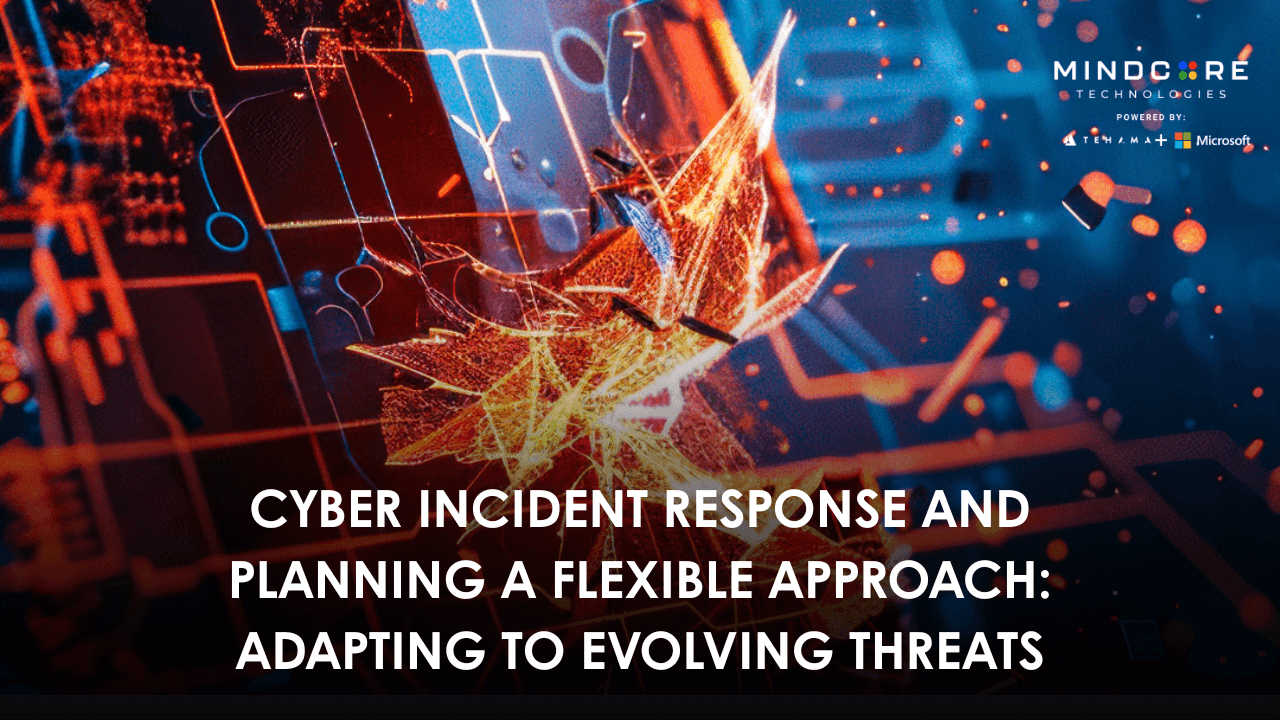Imagine your team starts a normal day, only to find out that overnight, a new kind of attack slipped through unnoticed. It didn’t match any known pattern, and now your systems are compromised. The response team jumps in—but halfway through, the limitations of your existing plan become obvious. The instructions don’t fit the problem.
This is the reality teams face today. Cyber threats evolve fast. Plans that worked last year—or even last month—might not apply now. That’s why flexibility in cyber incident response planning isn’t a nice-to-have. It’s a necessity.
A flexible approach helps businesses react faster, smarter, and more effectively. It fills the gap between static documents and real-world chaos. And in today’s threat landscape, that difference matters.
Why Fixed Plans Fall Short
Most of the conventional cyber response plans are written in such a way as if the attacks occur by following a script. Attackers don’t follow a script. They come up with new techniques, tools, and entry points. They change. So your plan should also change.
If your strategy emits rigid workflows and assumptions, it will not hold water when the unexpected threat knocks at your door. For instance, phishing tactics forever change, going from emails to SMS, or from a wide range of scams to very targeted social-engineering types. Ransomware keeps reinventing itself through new delivery or encryption strategies.
The life cycle of a cyber incident response has a framework, but if it does not come with an in-built allowance for flexibility for every one of its phases, like containment or recovery, such teams will be left with no choice other than being pressed and struggling to make timely decisions under pressure.
Core Elements of a Flexible Cyber Response Plan
A strong response plan should feel more like a toolkit than a locked instruction manual. These are some of the key traits that make your response adaptable:
- Modular playbooks: Break down actions by threat type (ransomware, insider threat, DDoS). Each module can be updated without rewriting the entire plan.
- Dynamic roles: Assign roles that can shift depending on the size and scope of the incident. For example, a small incident may not require full legal or executive involvement.
- Escalation paths by severity: Let the situation determine how many layers get activated. A minor phishing attempt might just need IT, but a data breach needs full team engagement.
These ideas align closely with the structure and content suggested in strong response documents. If you’re wondering which elements should be non-negotiable in your plan, it helps to break them down step-by-step with defined roles and triggers.
Adaptive Decision-Making in a Live Incident
Things rarely happen in accordance with expectations. This means your team must be able to make decisions on occasions when reality contradicts documentation.
Let’s say your analyst spots a sudden upturn in some weird outbound traffic which defies all signatures in your systems, but it feels wrong. A flexible plan allows the analyst to take the system offline without waiting for several approvals-because through all of this, every second counts. Such autonomy prevents expensive delays.
But good decision making during live response revolves around a few things:
- Clear authority levels: Define actions that can be undertaken immediately and those that need approval.
- Pre-agreed thresholds: Agree beforehand on what constitutes an emergency.
- Real-time communication channels: Ensure leads can be reached fast, without layers of delay.
Decisions shouldn’t be made in isolation. The legal and technical leads must get together without delay, especially if data exposure or regulatory issues may be concerned. Tying in the cybersecurity attorney with the response lead ensures that you aren’t just getting it right operationally, but also legally.
This blend of confidence, training, and structured flexibility is what separates a rigid checklist from a real-world-ready response.

Updating Based on Lessons Learned
Flexibility is about treating your plan like a living document; that means every incident is a learning opportunity.
Run post-incident reviews that don’t just involve asking questions. Instead, question what really matters during such an event:
- What worked?
- What failed?
- Did any step take too long?
- Was the right person called?
Consider also the root cause, not just the symptom. For instance, if your team missed a phishing alert, was it because of a technical gap, unclear roles, or alert fatigue? From there, update your documentation, adjust your thresholds, or retrain specific team members.
Simulation exercises are a good measure of flexibility. Perfection is never to be expected; rather, that’s the point. These tests expose where the real gaps lie so that filling can be undertaken before a real threat makes the same move.
How to Structure Flexibility Without Chaos
Some teams fear flexibility means “no structure.” But that’s not the goal. The goal is smart structure.
Start by building tiered decision models:
- Tier 1: Low-risk incidents handled by IT or security analyst
- Tier 2: Medium threats involve legal, comms, or HR
- Tier 3: High-impact incidents activate executive leadership
Create templates that help guide real-time decisions: checklists, notification trees, sample messages. These tools prevent panic and ensure consistency without forcing the team to memorize every detail.
This approach is especially valuable for organizations with limited resources. With smart structure and built-in flexibility, even lean teams can achieve strong results.
Building a Culture of Iteration and Resilience
Your documentation is not providing flexibility. Your team is for that.

Training and mindset matters. The teams should think critically, not just according to book. They should recognize when to raise a red flag, when to deviate from the norm, and when to take a time-out scream for legal review.
Make feedback loops. After every test or event, team members should be invited to come up with amendments. Reward improvements, not perfections. In this culture grows iteration, resilience.
This mindset also prepares a basis for those on the starting blocks of their journey into cyber response roles. When training future analysts or building up your team, incorporating flexibility in the curriculum should not make it an afterthought but part of it.
Final Thoughts: The Future of Resilient Response
Cyber threats won’t slow down. They’ll change tactics, shift targets, and look for weaknesses. Your response plan can’t be set in stone. It has to move with them.
Flexible planning is more than a strategy—it’s the only sustainable way forward. Make it part of your daily operations. Treat every incident, every drill, every update as a chance to improve.
Because in the real world, the best plans aren’t the ones that follow every step perfectly. They’re the ones that work when everything else goes sideways.

